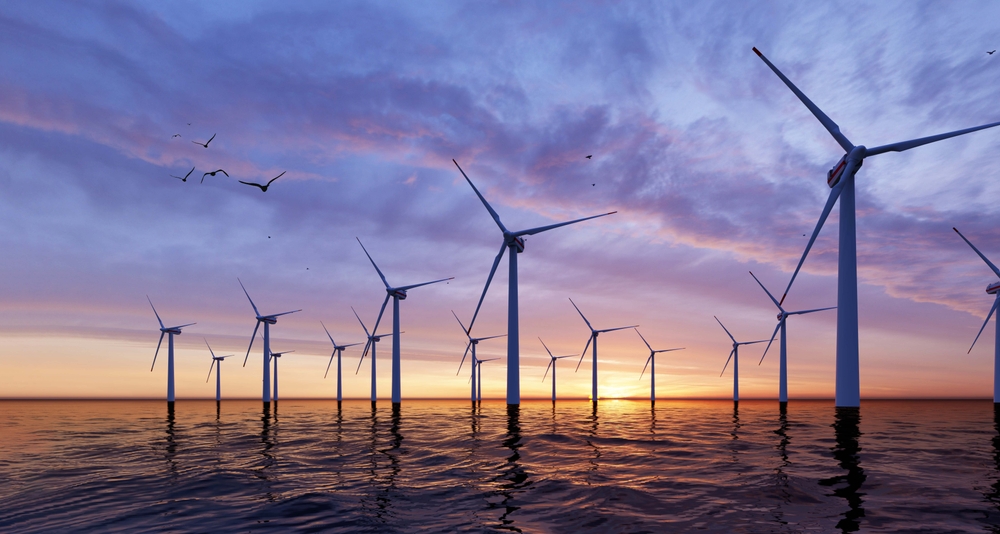

Expert’s Guide: Pacific Blue Review and Ratings
Pacific Blue is an electricity retailer and operates as the retail arm of renewable energy generation company, Pacific Blue Australia.
Sister company to popular Victorian energy provider Tango Energy, Pacific Blue is the latest electricity provider to join the market in the south.
Backed by a renewable energy generation company, Pacific Blue claims its key selling point is its ability to help consumers support the energy transition, but are its plans worth the switch for everyday Aussies? In this guide, Canstar Blue investigates Pacific Blue’s pricing, billing options and additional support to help you decide whether it could be the right fit for your household.
Pacific Blue prices
We take a look at Pacific Blue’s electricity plans in detail below to provide an insight into what you’ll actually pay.
Here are the Pacific Blue plans on our database for Victoria. These costs are based on the Citipower network in Melbourne but prices may vary depending on your circumstances. This comparison assumes general energy usage of 4000kWh/year for a residential customer on a single rate tariff. Please use our comparison tool for a specific comparison in your area. Our database may not cover all deals in your area. As always, check all details of any plan directly with the retailer before making a purchase decision.
Here are the Pacific Blue plans on our database for New South Wales. These costs are based on the Ausgrid network in Sydney but prices may vary depending on your circumstances. This comparison assumes general energy usage of 3900kWh/year for a residential customer on a single rate tariff. Please use our comparison tool for a specific comparison in your area. Our database may not cover all deals in your area. As always, check all details of any plan directly with the retailer before making a purchase decision.
Here are the Pacific Blue plans on our database for South East Queensland. These costs are based on the Energex network in Brisbane but prices may vary depending on your circumstances. This comparison assumes general energy usage of 4600kWh/year for a residential customer on a single rate tariff. Please use our comparison tool for a specific comparison in your area. Our database may not cover all deals in your area. As always, check all details of any plan directly with the retailer before making a purchase decision.
Here are the Pacific Blue plans on our database for South Australia. These costs are based on the SA Power network in Adelaide but prices may vary depending on your circumstances. This comparison assumes general energy usage of 4000kWh/year for a residential customer on a single rate tariff. Please use our comparison tool for a specific comparison in your area. Our database may not cover all deals in your area. As always, check all details of any plan directly with the retailer before making a purchase decision.
An expert’s guide to Pacific Blue
If you’re wondering what services Pacific Blue is offering in your state, look no further than the table below. We summarise what you can expect to find from Pacific Blue in NSW, VIC, QLD, SA, ACT, NT, TAS and WA.
| State | Electricity? | Gas? |
|---|---|---|
| NSW | ||
| VIC | ||
| QLD | ||
| SA | ||
| ACT | ||
| WA | ||
| TAS |
Pacific Blue plans
Pacific Blue currently has three market offer plans available to households in New South Wales, Victoria, Queensland and South Australia: Blue First, Blue Home and Green100. We have broken the details of these offers in further detail below.
- Blue First: This is the retailer’s flagship offer, coming with variable rates on an ongoing contract. Blue First offers competitive rates in exchange for customers agreeing to monthly e-billing and direct debit payments. Available only in Victoria.
- Blue Home: This is a variable rate offer however, customers don’t have to agree to e-billing or direct debit payments. The rates on this offer are slightly higher because of this, but still remain competitive relative to the market.
- Green100: This is also a variable rate offer that sources 100% of its electricity from wind.
See how Pacific Blue stacks up on price against other providers:
Other expert guides on Australian energy providers worth checking out:
Pacific Blue solar
Customers with solar in Victoria have access to a 3.3c/kWh feed-in tariff on their electricity plans with Pacific Blue.
Advertisement
Contact information and billing details
If you ever need to contact Pacific Blue about a product or service, you’ll find all the details below.
Pacific Blue contact information
Depending on what service you are after, Pacific Blue has a point of contact for you. Details are listed below:
- General enquiries: 133 669
- Email: support@pacificblue.com.au
- Fax: (03) 8621 6112
- Postal address:PO Box 320, Geelong VIC 3215, Australia
Pacific Blue billing
When it comes time to pay your energy bill, the retailer allows payment a few different ways for your convenience:
- Online: Make a payment via the website using a valid card.
- Direct Debit: Set up automatic debits from a nominated bank account or credit card.
- BPAY: Make payment using the biller code and BPAY reference number on the invoice.
- Phone: Make a payment over the phone using a valid card.
- Post Office: Make a payment by visiting any Australia Post Office and using a valid credit card, cheque or cash.
- Mail: Make a payment by cheque or money order and post it to Pacific Blue.
Pacific Blue My Account
For those looking to stay on top of their bills and view their usage history, Pacific Blue also has an online ‘My Account’ which customers can create an account for 24 to 48 hours after signing up. With My Account, customers can change their personal details and keep track of their usage information to help improve their home energy efficiency.
About the author
This page was written and is regularly updated by Canstar Blue’s Utilities Editor, Tara Donnelly. Having spent the last decade writing for and editing comparison websites, she’s an expert in all things energy, phone and internet. She loves to highlight the next best deals, while also flagging the things you need to be aware of.
Learn more about Canstar Blue’s Editorial Team.
Pacific Blue FAQs
With fairly affordable power prices and backing from a renewable energy generation company, Pacific Blue could be a viable option for eco-conscious and savings savvy households in Victoria.
It is important to note however, that while Pacific Blue is the retail arm of renewable energy generation company Pacific Blue Australia, Pacific Blue customers won’t be using renewable energy when signing up to this retailer. This is because customers will still be accessing electricity from the grid, which uses energy from a number of generation sources, both renewable and non-renewable. Rather, Pacific Blue’s generational assets help to incorporate more renewable energy into the grid and by choosing Pacific Blue, customers can help to support the company continue to manage these generators.
According to its website, Pacific Blue (formally known as Pacific Hydro) was acquired by the State Power Investment Corporation (SPIC) through its subsidiary, State Power Investment Overseas of China (SPIC Overseas) in January 2016.
What services does Pacific Blue offer?
| Service | Does Pacific Blue offer it? |
|---|---|
| Online chat functionality | |
| 24 hour call centre | |
| Energy saving tips on website | |
| Green energy options | |
| Notifications when bill is available | |
| Multiple billing options |
Through its generation arm, Pacific Blue has wind, solar and hydro assets operating across Victoria, New South Wales, Queensland, South Australia and Western Australia. According to its website, its current operating sites are as follows:
- Cape Bridgewater Wind Farm (VIC)
- Cape Nelson South Wind Farm (VIC)
- Cape Nelson North/William Grant Wind Farm (VIC)
- Challicum Hills Wind Farm (VIC)
- Clements Gap Wind Farm (SA)
- Codrington Wind Farm (VIC)
- Crowlands Wind Farm (VIC)
- Haughton Solar Farm (QLD)
- Taralga Wind Farm (NSW)
- The Drop Hydro Plant (NSW)
- The Ord Hydro Plant (WA)
- Yaloak South Wind Farm (VIC)
- Yambuk Wind Farm (VIC)

